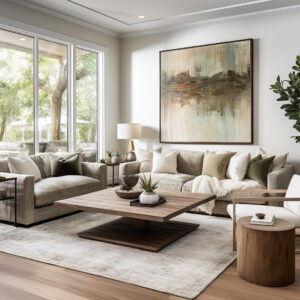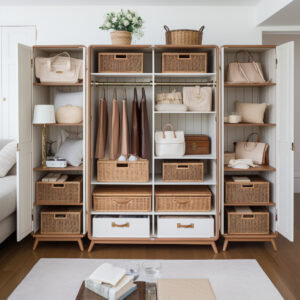Textured Wall Finishes: Eye-catching Ideas
Adding depth and character to your walls can transform a flat and dull space into a rich tapestry of intrigue and sophistication. Textured wall finishes are a tremendous interior design trend that breathes life into your living spaces, promoting comfort and visual interest. They’re more than a mere backdrop—they become a pivotal focal point that can dramatically alter the mood and aesthetic appeal of any room.
Introduction
Imagine stepping into a room that envelopes you with subtle nuances of texture, the play of light casting intriguing shadows across a feature wall, the gentle tactile experience under your fingertips—a space where the walls tell their own story. That’s the power of textured wall finishes, a design choice that can elevate your interior from ordinary to extraordinary. In the realm of home design, these tactile elements bring warmth and complexity, allowing homeowners and designers to express distinct personalities and styles.
Key Elements
Interior design is a delicate balance of form and function, where numerous elements come together to create a harmonious and pleasing environment. Here are the elemental pillars of interior design that inform our approach to creating beautiful spaces:
- Color Palettes: The colors chosen for a space set the mood. Cooler tones might evoke calmness, while warmer shades can bring energy and vibrancy. When paired with textured wall finishes, color can further accentuate the depth and dimension of the textures.
- Furniture Arrangement: The placement of furniture within a space impacts both aesthetics and functionality. Furniture should complement the textured finishes by neither overwhelming nor being overshadowed by them.
- Lighting: Good lighting enhances textures, casting shadows and highlights that showcase the intricacies of the wall design. Both natural and artificial lighting play roles in how texture is perceived.
- Accessories: The right accessories and decor can draw attention to a textured feature wall or integrate it seamlessly with the rest of the space. Decorative elements should support the theme created by the wall texture.
- Materials and Finishings: The materials used for textured wall finishes, such as plaster, stone, or wood, each add their own unique character. Their natural qualities can dictate the style and mood of the room.
- Spatial Harmony: Ensuring that every element in the room works in concert with the others is key to achieving spatial harmony. Textured wall finishes should not fight for attention but rather complement the overall design scheme.
Tips for Complementing Textured Wall Finishes
When choosing accents and furniture to match your textured walls, consider the following tips:
- Scale and Proportion:
- Furniture should be proportional to the wall’s texture scale. Smaller textures can be paired with more delicate furniture pieces, whereas larger, bolder textures might require more substantial furniture to hold the space.
- Color Coordination:
- Select furniture that complements or contrasts effectively with the wall’s color tones. Furniture in neutral hues often works well with a wide range of textures and colors.
- Material Matters:
- Introduce varying textures across furniture and accessories to create a layering effect that echoes the wall finish. Mirrored or glossy finishes can offer a visual break from a heavily textured wall.
- Balance the Visual Weight:
- Use furniture to create a sense of balance. If the textured wall is a statement feature, opt for simpler, understated furniture designs to allow the wall to dominate visually.
- Functionality with Style:
- Don’t sacrifice functionality for aesthetics. The items you choose should serve their purpose while enhancing the room’s design.
FAQ about Textured Wall Finishes
Question 1: How do I choose the right texture for my walls?
– Answer: Consider the room’s purpose, lighting conditions, and existing decor. Subtle textures often work well in bedrooms for a soothing effect, while dramatic textures can enliven living areas. Always test samples in different lights before making a decision.
Question 2: Can textured finishes be applied to any wall?
– Answer: Most walls can be given a textured finish with proper preparation. However, walls that are damp, not structurally sound, or have significant imperfections may need to be treated or repaired first.
Question 3: Are textured walls harder to maintain?
– Answer: Some textures may require more care, especially if they’re prone to dust accumulation or are more delicate. Ensure you know how to clean and maintain your chosen finish to keep it looking its best.
Question 4: Will a textured wall go out of style?
– Answer: While design trends come and go, textured walls have a timeless quality if done tastefully. Choosing a texture that complements your personal style and the architectural details of your home is more important than following trends.
Question 5: How do I integrate textured walls with my current decor?
– Answer: Start by identifying the primary and secondary colors in your texture. Bring in decor elements that echo these colors and consider the texture’s style—be it rustic, modern, or traditional—to select pieces that align with the overall aesthetic.
Through the creative use of textured wall finishes, we can curate interior spaces that not only tell a unique story but also offer a multisensory experience that delights and inspires. Whether you’re looking to add a subtle touch of elegance or a bold statement piece, textured walls provide a canvas that reflects your individuality while contributing to a balanced and inviting home environment.




